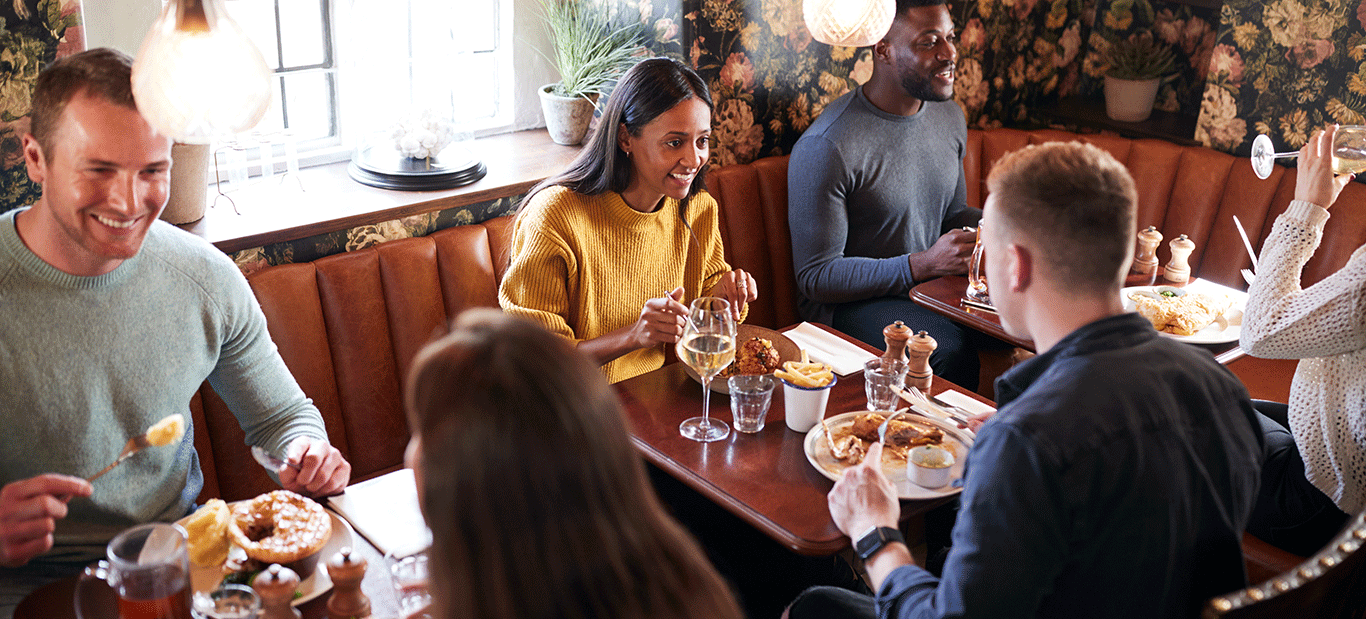Consumer Restaurant Selection & Food Safety: How COVID-19 Will Continue Affecting Behavior
Consumer Restaurant Selection & Food Safety: How COVID-19 Will Continue Affecting Behavior
Welcome to Darwin’s Diner
They say change is constant. What they don’t say is the speed of change is variable. Now, one way to speed up change is through a catalyst or triggering event. COVID-19 was a triggering event for the ages. From an instantaneous pivot to “virtual” everything, to the now ubiquitous turn of phrase “social distancing,” the pandemic forced consumer behaviors to evolve overnight. Nowhere was change felt more than in the restaurant industry. Sitting down for a meal in public was suddenly not an option. It became, in fact, dangerous. The nimble players had to adapt, evolve and overcome challenges simply to remain viable. And, sadly, some did not survive.
From curbside pickup, to take-and-make meals, to Plexiglas dividers and safety guidelines, the consumer dining experience shifted dramatically in short order. Now, as the vaccines roll out and we limp back toward a state of “normalcy,” it’s a fair question to ask: Are our dining behaviors permanently changed? And, what of the new dining experience will remain with us long after the pandemic subsides? Will we look at a shared ketchup bottle as a potentially contaminated source or will we gladly grab it to douse our burgers and fries. Will more and more people continue to cook at home, or will we slowly return to “the way it was?”
Looking at the data reveals some fascinating insights about where consumer restaurant selection behaviors are headed:
1. No other industry was hit harder
The National Restaurant Association’s 2021 State of the Restaurant Industry report finds:
-
-
- The restaurant industry ended 2020 with total sales that were $240 billion below the Association’s pre-pandemic forecast for the year.
- As of Dec. 1, 2020, more than 110,000 eating and drinking places were closed for business temporarily, or for good.
- The restaurant sector finished 2020 nearly 2.5 million jobs below its pre-coronavirus level. At the peak of initial closures, the Association estimates up to 8 million employees were laid off or furloughed.
-
2. Diners want to get back into restaurants safely
According to OpenTable’s 47,000+ diner survey, part of their quarterly Diner Insights series:
-
-
- 52% say they plan to dine out at a restaurant with table service once a week or more in 2021 – up 24% from October.
- 60% say they have more appreciation for restaurants and their staff than they did prior to the pandemic.
- 28% say they don’t expect to get back to their normal dining out behavior until April 2021 or later in the year.
- 43% of diners say a restaurant’s health and safety measures will be the most important factor.
- Even when the pandemic ends, diners (79%) say they’ll want increased sanitization.
-
3. The “new normal” changes are here to stay
Oracle’s Dining In and Out in 2021 report highlights that if consumers have their way, new ways of paying and ordering will probably stick:
-
-
- 40% would like the option to view menus and place orders from a personal device.
- 36% would like the option to reserve a table in advance from a personal device.
- 33% want contactless payment options from a self-service kiosk or tablet.
- 33% would like the option to pay for their meal directly from their personal device.
-
The report The New Normal for Restaurants: Consumer behavior in a world after COVID-19 lockdowns notes that:
-
-
- Home cooked meals are restaurants’ greatest competition coming out of COVID-19 lockdowns – Consumers intend to eat 37% of meals at home, compared to 33% prior to COVID-19.
- Consumers plan to order more frequently from apps/websites post-lockdowns – they intend to order 25% of meals via apps and website after stay-at-home orders are lifted, compared to 21% prior to COVID-19.
- While growing, only 45% of consumers have ordered food via delivery – 70% of delivery orders go through a third-party platform.
- Delivery and curbside pickup consumption channels are likely to grow after lockdowns are lifted – Consumers intend to receive 14% of meals through delivery and 8% of meals through curbside pickup post-COVID-19, compared to 12% and 5% respectively, pre-COVID-19.
-
The harsh reality is that the restaurant industry faces an uphill battle to return to pre-pandemic numbers. But the good news is that consumers are craving in-restaurant meals, respect the industry more today and appreciate steps taken to adapt during the pandemic.
It was mentioned earlier the speed of change is variable. A comparison to a much earlier, much slower change is apt. Just as glaciers once enveloped the earth to shape its topography and landscape, the COVID-19 pandemic put a deep freeze on the restaurant industry. As the industry defrosts and the glacial pandemic recedes, a new industry landscape will be revealed, and consumer restaurant selection will continue to change. Restaurants that come out strong, ready to meet the new demands of hungry consumers will be the ones that make it. Like I said, welcome to Darwin’s Diner.
Restaurants aren’t the only members of the food industry family that will need to change drastically to meet the needs of rapidly changing consumer behaviors. Check out our blog post about consumer eating behaviors for a deeper dive on how perceptions of the food we eat continue to change as a result of COVID-19.
 Back To Blog
Back To Blog

